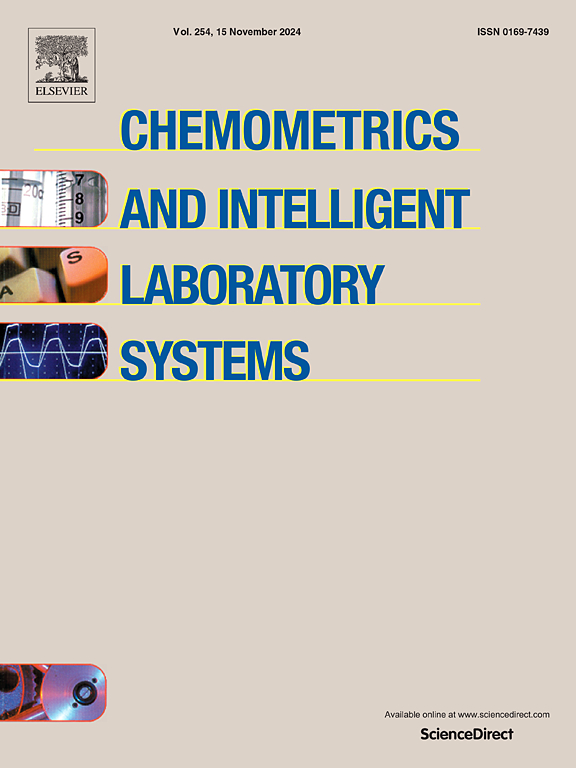Enhanced satellite image resolution with a residual network and correlation filter
IF 3.7
2区 化学
Q2 AUTOMATION & CONTROL SYSTEMS
Chemometrics and Intelligent Laboratory Systems
Pub Date : 2024-11-22
DOI:10.1016/j.chemolab.2024.105277
引用次数: 0
Abstract
This study addresses the predominant challenge of very low-resolution satellite images in remote sensing applications, a common issue in satellite image-based surveillance. Existing satellite image recognition algorithms struggle with such low-resolution images, and traditional Super-Resolution (SR) techniques fall short for very low-resolution cases. We propose the Progressive Satellite Image Super-Resolution (PSISR) model to bridge this gap. Unlike current learning-based SR methods, the PSISR model specifically targets very low-resolution satellite images. In satellite image super-resolution, problems with feature fusion that result in image noise, blind spots, poor perceptual quality, and checkboard artifacts are encountered during the reconstruction process. Current models try to improve perceptual quality, but they frequently show challenges in attaining acceptable outcomes because of losses during reconstruction. Using a combined loss function, correlation filters, and a loss-aware upscaling network layer, the PSISR model presents a revolutionary methodology. The model adopts a cascading structure with dense skip connections, sequentially upscaling images by factors of , , and through three modules. To validate the model's superiority, a study is conducted, confirming its effectiveness compared to baseline models and also training the other models using the available dataset to prove the effectiveness of the model. The PSISR model effectively addresses the challenge of extracting more features with minimal losses, resulting in high magnification during reconstruction. Our method outperforms state-of-the-art techniques, including Swin2-MoSE, MambaFormer, SRFBN and RCAN, with a PSNR improvement of up to 0.4 dB and a 0.003 SSIM enhancement across various datasets. This demonstrates the effectiveness of our approach in producing high-quality outputs, achieving a 99.25 % correlation efficiency between the generated and original images.
利用残差网络和相关滤波器增强卫星图像分辨率
本研究解决了遥感应用中极低分辨率卫星图像的主要挑战,这是基于卫星图像的监视中的一个常见问题。现有的卫星图像识别算法难以识别这种低分辨率图像,而传统的超分辨率(SR)技术在非常低分辨率的情况下表现不佳。我们提出了渐进式卫星图像超分辨率(PSISR)模型来弥补这一差距。与目前基于学习的SR方法不同,PSISR模型专门针对非常低分辨率的卫星图像。在卫星图像超分辨率重建过程中,会遇到特征融合导致图像噪声、盲点、感知质量差、棋盘伪影等问题。目前的模型试图提高感知质量,但由于重建过程中的损失,它们在获得可接受的结果方面经常表现出挑战。使用组合损失函数,相关滤波器和损失感知的升级网络层,PSISR模型提出了一种革命性的方法。该模型采用密集跳跃连接的级联结构,通过三个模块依次将图像以2倍、4倍、8倍的倍数进行提升。为了验证模型的优越性,我们进行了一项研究,确认了其与基线模型的有效性,并使用可用的数据集训练其他模型来证明模型的有效性。PSISR模型有效地解决了以最小损失提取更多特征的挑战,从而在重建过程中实现了高放大。我们的方法优于最先进的技术,包括Swin2-MoSE, MambaFormer, SRFBN和RCAN,在各种数据集上的PSNR提高了0.4 dB, SSIM提高了0.003。这证明了我们的方法在产生高质量输出方面的有效性,在生成的图像和原始图像之间实现了99.25%的相关效率。
本文章由计算机程序翻译,如有差异,请以英文原文为准。
求助全文
约1分钟内获得全文
求助全文
来源期刊
CiteScore
7.50
自引率
7.70%
发文量
169
审稿时长
3.4 months
期刊介绍:
Chemometrics and Intelligent Laboratory Systems publishes original research papers, short communications, reviews, tutorials and Original Software Publications reporting on development of novel statistical, mathematical, or computer techniques in Chemistry and related disciplines.
Chemometrics is the chemical discipline that uses mathematical and statistical methods to design or select optimal procedures and experiments, and to provide maximum chemical information by analysing chemical data.
The journal deals with the following topics:
1) Development of new statistical, mathematical and chemometrical methods for Chemistry and related fields (Environmental Chemistry, Biochemistry, Toxicology, System Biology, -Omics, etc.)
2) Novel applications of chemometrics to all branches of Chemistry and related fields (typical domains of interest are: process data analysis, experimental design, data mining, signal processing, supervised modelling, decision making, robust statistics, mixture analysis, multivariate calibration etc.) Routine applications of established chemometrical techniques will not be considered.
3) Development of new software that provides novel tools or truly advances the use of chemometrical methods.
4) Well characterized data sets to test performance for the new methods and software.
The journal complies with International Committee of Medical Journal Editors'' Uniform requirements for manuscripts.

 求助内容:
求助内容: 应助结果提醒方式:
应助结果提醒方式:


